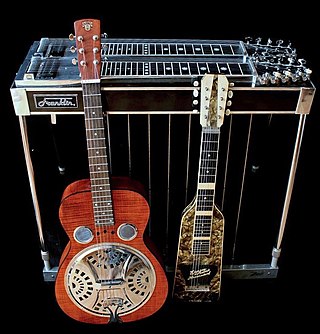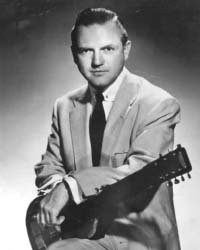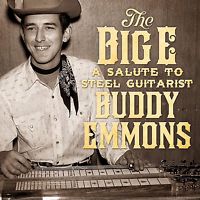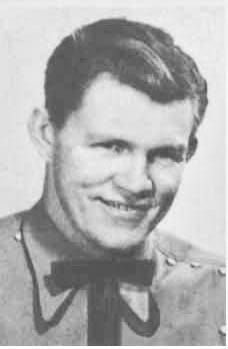
Slide guitar is a technique for playing the guitar that is often used in blues music. It involves playing a guitar while holding a hard object against the strings, creating the opportunity for glissando effects and deep vibratos that reflect characteristics of the human singing voice. It typically involves playing the guitar in the traditional position with the use of a slide fitted on one of the guitarist's fingers. The slide may be a metal or glass tube, such as the neck of a bottle, giving rise to the term bottleneck guitar to describe this type of playing. The strings are typically plucked while the slide is moved over the strings to change the pitch. The guitar may also be placed on the player's lap and played with a hand-held bar.

A steel guitar is any guitar played while moving a steel bar or similar hard object against plucked strings. The bar itself is called a "steel" and is the source of the name "steel guitar". The instrument differs from a conventional guitar in that it is played without using frets; conceptually, it is somewhat akin to playing a guitar with one finger. Known for its portamento capabilities, gliding smoothly over every pitch between notes, the instrument can produce a sinuous crying sound and deep vibrato emulating the human singing voice. Typically, the strings are plucked by the fingers of the dominant hand, while the steel tone bar is pressed lightly against the strings and moved by the opposite hand.

The pedal steel guitar is a console-type of steel guitar with pedals and knee levers that change the pitch of certain strings to enable playing more varied and complex music than other steel guitar designs. Like all steel guitars, it can play unlimited glissandi and deep vibrati—characteristics it shares with the human voice. Pedal steel is most commonly associated with Country music and Hawaiian music.

The lap steel guitar, also known as a Hawaiian guitar, is a type of steel guitar without pedals that is typically played with the instrument in a horizontal position across the performer's lap. Unlike the usual manner of playing a traditional acoustic guitar, in which the performer's fingertips press the strings against frets, the pitch of a steel guitar is changed by pressing a polished steel bar against plucked strings. Though the instrument does not have frets, it displays markers that resemble them. Lap steels may differ markedly from one another in external appearance, depending on whether they are acoustic or electric, but in either case, do not have pedals, distinguishing them from pedal steel guitars.

Solomon Hoʻopiʻi Kaʻaiʻai was a Native Hawaiian lap steel guitarist. A virtuoso, he was one of the most famous original Hawaiian steel guitarists, along with Joseph Kekuku, Frank Ferera, Sam Ku West and "King" Bennie Nawahi.

Doug Jernigan is an American pedal steel guitarist and Dobro player. He is known for his infusion of country music with jazz using fast single-note solos. He was one of the first steel guitarists to play solos at speeds rivaling the banjo and fiddle. Jernigan performed with Faron Young, Johnny Paycheck, Vassar Clements, Little Jimmy Dickens, and Lorrie Morgan and was a Nashville recording session musician and teacher for decades. As of 2020, he has been the featured artist on nine instrumental albums in both jazz and country genres. He was inducted into the Steel Guitar Hall of Fame in 1994.
Andy Iona was an American musician and one of Hawaii's most influential musicians. He was a composer, songwriter, conductor, saxophonist, and steel guitarist. He went to the Kamehameha School for Boys. He was also educated at Henri Berger's Private School of Music in Honolulu.
Elbern H. "Eddie" Alkire was America's most recognized performer, teacher, and innovator of the twentieth-century Hawaiian guitar.

Gerald Lester Byrd was an American musician who played the lap steel guitar in country and Hawaiian music, as well as a singer-songwriter and the head of a music publishing firm. He appeared on numerous radio programs.

Buddy Gene Emmons was an American musician who is widely regarded as the world's foremost pedal steel guitarist of his day. He was inducted into the Steel Guitar Hall of Fame in 1981. Affectionately known by the nickname "Big E", Emmons' primary genre was American country music, but he also performed jazz and Western swing. He recorded with Linda Ronstadt, Gram Parsons, The Everly Brothers, The Carpenters, Jackie DeShannon, Roger Miller, Ernest Tubb, John Hartford, Little Jimmy Dickens, Ray Price, Judy Collins, George Strait, John Sebastian, and Ray Charles and was a widely sought session musician in Nashville and Los Angeles.
"Steel Guitar Rag" is the seminal Western swing instrumental credited with popularizing the steel guitar as an integral instrument in a Western band.

Lloyd Lamar Green is an American steel guitarist noted for his extensive country music recording session career in Nashville performing on 116 No.1 country hits including Tammy Wynette's “D-I-V-O-R-C-E” (1968), Charlie Rich's “Behind Closed Doors” (1973), The Oak Ridge Boys’ “Elvira” (1981), and Alan Jackson's “Remember When” (2004). Green was a one of an inner circle of elite recording studio musicians known colloquially as the Nashville A-Team. In a career beginning in the mid 1960s and spanning a quarter-century, Green performed on more than 5000 recordings helping to create hits for scores of artists such as Charley Pride, The Byrds, Johnny Cash, The Monkees, Don Williams, Paul McCartney, Bob Dylan, and many others. His 1968 performance on the Byrds' landmark album Sweetheart of the Rodeo, influenced generations of non-mainstream country guitarists. He was featured on Ken Burns' Country Music documentary film in 2019. Green was inducted into the Steel Guitar Hall of Fame in 1988.
Gage Kelso Brewer was an American musician, guitarist and bandleader. Brewer is credited with the first staging of a publicly promoted performance featuring the electric guitar, as well as the earliest recording using both the electric Hawaiian and electric Spanish guitar.
Alan Akaka is a Hawaiian steel guitarist and educator. The son of former congressman and senator Daniel Akaka, he has taught at several schools and is in charge of the Hawaiian music school Ke Kula Mele. In 2014 he successfully led a petition to prevent the ukulele from being named the official state musical instrument, arguing that the steel guitar was more reflective of Hawaiian tradition.

Herbert Leroy Remington (1926–2018) was an American lap steel guitarist who played Western swing music with Bob Wills and the Texas Playboys from 1946 to 1949. A member of the International Steel Guitar Hall of Fame (1979), Remington is known for his Hawaiian style playing combined with swing-based jazz soloing. One of his signature recordings was Bob Wills' "Boot Heel Drag", which appeared on the B-side of Wills' classic hit, "Faded Love". He is also known for "Remington's Ride", a song that became a standard for steel players. Indiana-born Remington studied Hawaiian steel guitar as a youth, but serendipitously got into Western swing music in his teens and became one of the genres most renowned steel guitarists.

Forrest "Bud" Isaacs (1928–2016) was an American steel guitarist who made country music history in 1954 as the first person to play pedal steel guitar on a hit record. He is known for his playing his innovative technique on Webb Pierce's 1954 recording of a song called "Slowly" which became a major hit for Pierce and was one of the most-played country songs of 1954. Isaacs was the first to push a pedal while the strings were still sounding to create a unique bending of notes from below up to join an existing note; this was not possible on older lap steel guitars. The stunning effect he created was embraced by country music fans and many lap steel artists rushed to get pedals to imitate the unique bending chords that he played. Music historians pinpoint the actual dawning of country music's modern era to Isaac's performance on this song. He became a much-favored session player and performed on 11 top country records the year following the release of "Slowly". Even though pedal steel guitars had been available for over a decade before this recording, the instrument emerged as a crucial element in country music after the success of this song.
Zane Beverly Beck (1927–1985) was an American steel guitarist and builder of pedal steel guitars. He is best known for his 1952 innovation of adding knee levers to the pedal steel guitar to alter the pitch of certain strings, a feature which has become a standard on all modern-day instruments. Other inventors had patented crude knee-operated devices as far back as 1933, but none were successful. Beck revolutionized the concept into a durable and reliable mechanism and was the first to put knee levers on production guitars. He became a member of the International Steel Guitar Hall of Fame (1991). As a musician, he performed on the Grand Ole Opry and Shreveport's Louisiana Hayride. Beck formed the ZB Music Company which manufactures steel guitars, later called BMI.
Thomas Lewis Bradshaw is an American steel guitarist, journalist, music historian and businessman and who is known for his contributions to the pedagogy of steel guitar. He is a member of the Steel Guitar Hall of Fame (2006). Bradshaw is noted for creating what is now an international standard for describing how a steel guitar is configured, and coined the name "copedent" to describe it. NPR music writer Jesse Jarnow called Bradshaw "perhaps the world's leading authority on the instrument". Bradshaw played and repaired steel guitars and sold parts and accessories for the instruments for nearly a half-century. He was editor and publisher of Steel Guitarist magazine and was a columnist and writer for Guitar Player Magazine for many years, interviewing elite players and documenting steel guitar's evolution. His plaque in the Hall of Fame reads in part, " He was steel's foremost journalist of his time"
The Steel Guitar Hall of Fame is an organization established in the United States in 1978 to recognize achievement in the art of playing the steel guitar. The organization's stated purpose is:
To establish a Hall of Fame and Museum to support the art, popularity, and prestige of the steel guitar, to honor those musicians and composers who have made significant contributions to the steel guitar world, and to educate the public regarding the steel guitar.

Dick Kaihue McIntire (1902–1951) was a Honolulu-born steel guitarist active in the 1930s and 1940s. During that era, Hawaiian music was quite popular in the U.S. to the extent of being a musical fad. McIntire performed on hundreds of recordings with artists such as Bing Crosby, Dorothy Lamour, Frances Langford, Ray Kinney, and Lena Machado and was featured in motion picture soundtracks. He was known for his smooth, legato approach to the electric lap steel guitar with his Los Angeles group, The Harmony Hawaiians. His brothers Lani McIntire and Al McIntire were also musicians. According to music historian Andy Volk, Dick McIntire had a profound influence on steel guitar pioneer Jerry Byrd in Byrd's formative years. McIntire was inducted into the Steel Guitar Hall of Fame in 1982.












